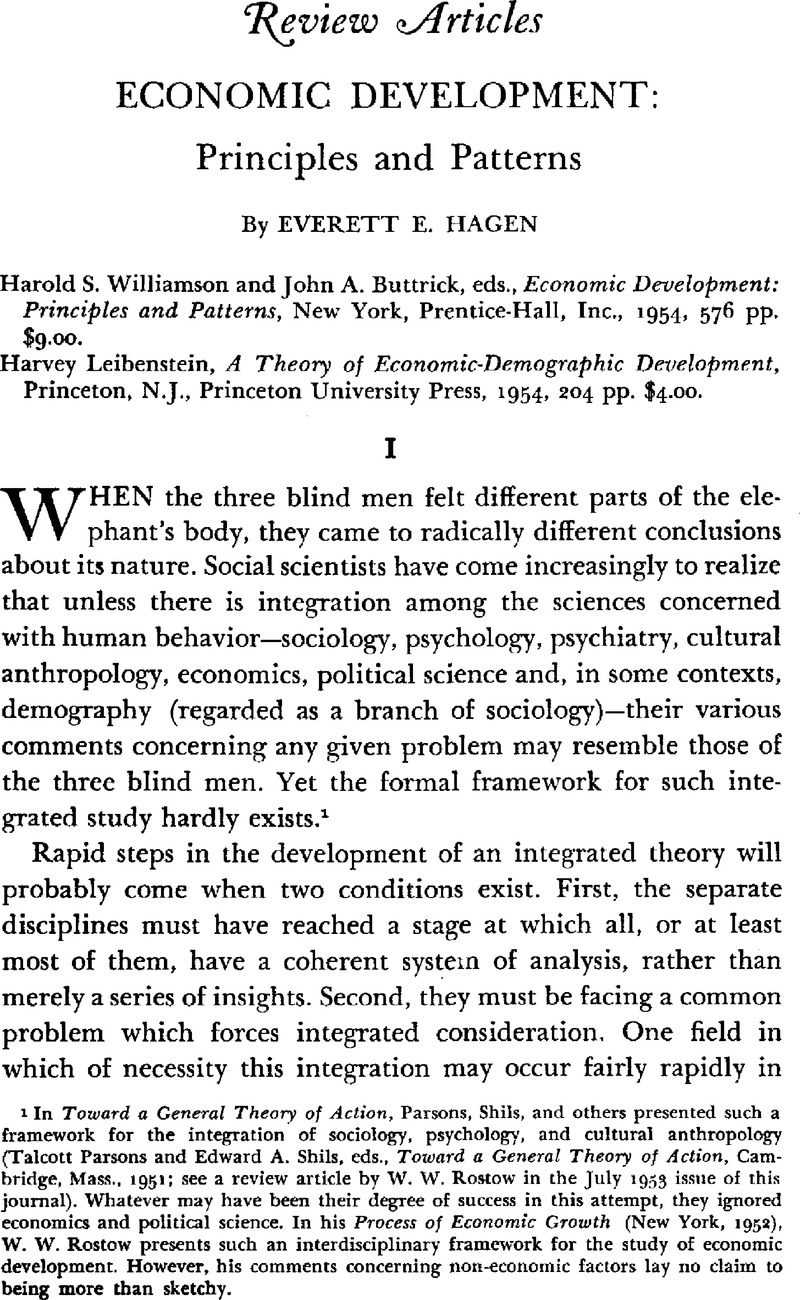No CrossRef data available.
Article contents
Economic Development: Principles And Patterns
Published online by Cambridge University Press: 18 July 2011
Abstract

- Type
- Review Article
- Information
- Copyright
- Copyright © Trustees of Princeton University 1955
References
1 In Toward a General Theory of Action, Parsons, Shils, and others presented such a framework for the integration of sociology, psychology, and cultural anthropology (Parsons, Talcott and Shils, Edward A., eds., Toward a General Theory of Action, Cambridge, Mass., 1951CrossRefGoogle Scholar; see a review article by W. W. Rostow in the July 1953 issue of this journal). Whatever may have been their degree of success in this attempt, they ignored economics and political science. In his Process of Economic Growth (New York, 1952), W. W. Rostow presents such an interdisciplinary framework for the study of economic development. However, his comments concerning non-economic factors lay no claim to being more than sketchy.
2 Rev. ed., London, 1951.
3 United Nations, Department of Economic Affairs, New York, 1951.Google Scholar
4 Barnett, H. G., Innovation, New York, 1953Google Scholar, represents an initial attempt to formulate such a theory.
5 DrMenninger, William C., Social Change and Scientific Progress, Arthur Dehon Little Memorial Lecture, Massachusetts Institute of Technology, Cambridge, Mass., 1951, pp. 29–30.CrossRefGoogle Scholar I have reversed the order of the sentences quoted.
6 The economist who has written most about the process of growth, Joseph A. Schum-peter, has glorified the entrepreneur.
7 Rosenstein-Rodan, P. N. set forth this fact clearly in his “Problems of Industrialisation of Eastern and South-Eastern Europe,” Economic Journal, LIII (June-September, 1943), pp. 202–11.CrossRefGoogle Scholar
8 The mathematical presentation is marred slightly by two errors. On page 45, Leibenstein states that in his simplest model the size of the population is a function of average per capita income. This is incorrect. The model is actually one in which population size is a function of aggregate income; aggregate income is a function of population size and the quantity of resources; and the quantity of resources is given.
Again, on page 47, he states that ![]() , and that M = (1 + AB). One of these definitions is incorrect. Either
, and that M = (1 + AB). One of these definitions is incorrect. Either ![]() But though the careless definitions may cause slight momentary confusion, the subsequent mathematical treatment is correct.
But though the careless definitions may cause slight momentary confusion, the subsequent mathematical treatment is correct.




